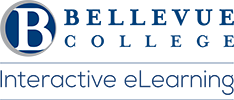by Brian Bergen-Aurand
Over the past five years, Tech.edu: A Hopkins Series on Education and Technology (from Johns Hopkins University Press) has published eleven books addressing the relationship among digital teaching and learning, accessibility and engagement, and student online experiences. Several of the titles address gaming and gamification. A couple focus on digital knowledge and the dynamics of online authority. The forthcoming Learning Online (May 2020) promises to analyze student experiences in online environments around the world.
The most recent book in the series, Diversifying Digital Learning: Online Literacy and Educational Opportunity (edited by William G. Tierney, Zoë B. Corwin, and Amanda Ochsner), looks at K-12 and postsecondary education to ask how digital learning is and is not addressing issues of access, equity, and digital literacy. In the process, it especially focuses on students from low-income, minoritized, and first-generation communities. In the process, it examines learners’ access to technological resources but also goes much further into assessing the ways in which online experiences account for class, race, gender, location, and political engagement to encourage or discourage student engagement and achievement.
The goal is to unmask how social, educational, and digital institutions and networks reproduce inequality and, as Williams and Suneal Kolluri explain in their introduction, “expand the way we think about digital equity across diverse educational, cultural, and socioeconomic contexts… from large-scale educational reform efforts to microlevel examples of how individuals are making sense of digital technologies” (17).
To these ends, the eight chapters in Diversifying Digital Learning examine the role of computer science classes in school reform, issues of facilitation and agency, digital media and civic engagement, girls and gaming, the effect of online learning on student career choices, African American learners and questions of youth mental health, and technology and educational justice. The emphasis is on the positive aspects of exposure to digital media and increased screen time and the promise of “positive outcomes” for children and youth who are encouraged and enabled to use “media for creating and learning, connecting with others, and civic action and engagement” (195). While recognizing the potential problems associated with encouraging screen exposure, the editors and authors highlight the benefits of “using digital media to learn, create, communicate, and participate” (195) to encourage more students to engage in their socio-political situations.
The eighteen contributors (many of whom co-author various chapters) outline the importance of digital learning policy at the larger scale, but consistently highlight the local as the essential site of engagement. They argue that the macrolevel matters, but also that pedagogical practice must always return to the microlevel. They emphasize the roles of teachers, of taking students’ unique lived experiences into account, of facilitating direct student support, of the relation between resource-constrained schools and assumptions and biases, of barriers and “interest-driven learning,” and of the potential of the informal support mechanisms digital platforms can provide. Overall, the point of Diversifying Digital Learning is to frame digital learning as a set of challenges and opportunities for teachers to take up when aiming to better engage their students in becoming more active participants in their social, cultural, and educational experiences.
The book ends with a brief chapter tying these investigations together under four themes:
- The Context of Digital Media Use
- The Quality of Content
- The Value of Connections
- Moving Forward: Digital Equity and Educational Equity.
As well, in the final chapter, Diversifying Digital Learning reminds readers of a number of questions we need to consider as we design and develop our digital learning projects and policies in our classrooms and across our campuses:
- What does context entail when considering digital learning?
- What contextual conditions need to be in place to ensure students have equitable access to digital educational opportunities?
- How might we assess the quality of content on both the macro- and micro-levels, especially with regard to gender, race, and culture?
- How might we promote connected and collaborative efforts that hold the potential to increase equity for underrepresented populations and better operationalize civic engagement?
In their efforts to address and expand upon these questions, the editors emphasize their dedication to cultivating digital media as a platform for students to connect, amplify, and engage their voices in projects around the world.
If our goal as educators is to motivate and enable students from all backgrounds and situations to flourish as critically, civically engaged learners and activists, we need to provide them with the leadership, opportunity, and access they need to implement such collaborations. If we have done our jobs correctly, the editors assert, “Ideally, digital media illuminates opportunities for students to develop a sense of agency, express their voices, and mobilize for change around social issues they care about” (196). Through properly integrated digital media and collaborative projects large and small, we can better empower them to challenge themselves and their worlds local and global.
Brian Bergen-Aurand is a Certified Instructional Designer in eLearning and Faculty in Arts & Humanities. He specialized in questions of Quality Standards (QOI, QM), analytical design, and peer course review.
Last Updated November 2, 2020
